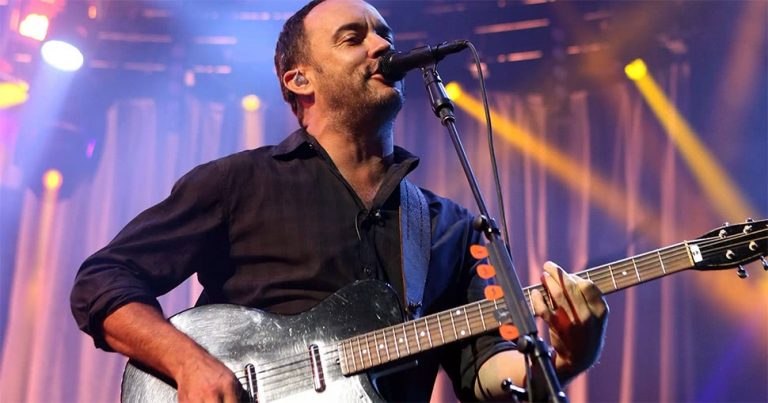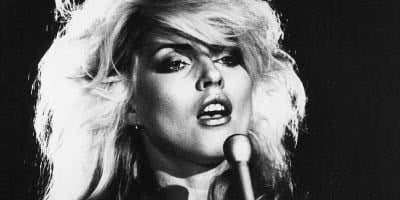From The Grateful Dead to The Dave Matthews Band; Tone Deaf explores the fascinating world of “jam bands”.
Rock’n’roll is raucous, it’s blunt, and it’s concise. But there’s a fascinating intersection between rock, jazz, and electronica where the concept of a “song” is just an excuse to improvise free-flowing chord patterns, complex melodies and rhythmic grooves that seem to play on for all eternity. Welcome to the world of the “jam band”.
By the end of the 1950s, most of the world went through a post-war economic boom that saw a significant expansion of the middle class. It was during this time that house appliances like television sets and washing machines that were considered before as signs of affluence became normal household items that every family could afford.
Similarly, this new economic scenario made possible for a greater number of families to take their children all the way through college. It was during these years that the idea of a “career” and the social cycle we consider today as “natural” was cemented.
That meant, going to high-school, then college, and then entering the labour force. (The “choking on student loans” part was incorporated decades later).
Check out ‘Ripple’ by The Grateful Dead:

Those marvellous swinging sixties our folks talk about all the time…
It was during the ‘60s that society underwent a global cultural schism between traditional values and the new ideas brewing among young people, especially on college campuses. It was the era of non-ironic revolution and counterculture where the existing social constructs of race, genre, and politics were challenged.
During the ‘60s we saw vulnerable, more relatable superheroes appear like Spider-Man and The Fantastic Four. The underground comic book scene produced delicious works full of obscenity and social critique. The French New Wave, Andy Warhol’s Factory and artists like Stan Brakhage deconstructed the rules of cinema and showed us a different type of film, one that rejected the three-act dramatic structure and redefined the whole medium.
Love The Beatles?
Get the latest The Beatles news, features, updates and giveaways straight to your inbox Learn more
The Latin American literature boom shook the world with different visions of fantasy and reality. Pelé and Muhammad Ali were probably the biggest names in sport in the world. There was a newfound interest in Eastern philosophy and culture, with the Maharishi becoming a world celebrity. It was a decade of long hair, miniskirts, hippies, and drugs, lots of drugs.
A wide range of new musical genres began to appear, with new sounds that disregarded tradition and attempted to tear down established rules and rigid structures.
Psychedelic drugs, especially LSD, became popular and greatly influenced musicians, with free jazz and psychedelic rock attempting to emulate the atemporality and shapelessness of the “trip”. Not even the Beatles could escape this sentiment.
When the fab four decided not to ever tour again in 1966, they responded a year later with the iconic album Sgt. Pepper’s Lonely Hearts Club Band, a work that saw them diving head-first into experimentation only possible in the studio.
Artists like Frank Zappa started to appropriate elements from jazz to create a new, free-flowing kind of rock’n’roll unrestricted from previous formulas; the term “jam band” became an umbrella word to describe acts that went beyond traditional song structures and incorporated influences from other genres.
The bands labelled under the moniker played extremely long shows with varying setlists in which they evolved and reworked their material, introducing highly creative segues and never-ending instrumental performances. No two shows were even remotely alike.
The Allman Brothers Band and the The Grateful Dead especially, became the torch bearers of this movement that relied heavily on improvisation and total disregard of predictable outcomes.
Songs like ‘Whipping Post’ from The Allman Brothers Band, which was 5 minutes long in their studio album version where converted into epic 20-minute extravaganzas at their concerts.
Check out ‘Whipping Post’ by The Allman Brothers Band:

Jam bands delve into all kinds of styles, from progressive rock to Southern rock, from folk to electronica. The term doesn’t refer to any specific genre, but rather encompasses artists that adopt a highly improvisational approach to their material when they perform it live.
Jam bands also associate with a specific subculture that revolves around psychedelia, free love and other values associated with the hippy movement. As two performances are never the same, bootlegging is an almost essential part of the concert-going experience, with bands recognising this fact and often encouraging it.
The Grateful Dead was famous for setting a special “bootlegging section” in their venues where fans could bring their own microphones and tape decks to record without the worry of interfering with the experience of other ticket holders.
Although the jam band tradition continued beyond the ‘60s, and the ‘80s saw the apparition of Phish, one of the greatest exponents of the style ever, the explosion of punk in the late ‘70s, and subsequent commercial success of new wave, pop and hip-hop absorbed the public’s attention and took the limelight away from more free-flowing, unpredictable jam music.
The industry veered again towards concise, three-minute songs and never again did something like Iron Butterfly’s almost 20-minute long ‘In-A-Gadda-Da-Vida’ land again on the charts.
Check out ‘In-A-Gadda-Da-Vida’ by Iron Butterfly:

Jamming 2.0
It was only until the eruption of the Seattle sound in the early ‘90s that the phenomenon of the “jam band” appeared again in full force. The industry went through a global disruption that left a highly fragmented market with a myriad of genres and niche audiences.
Among the chaos, acts like Primus, Blues Traveller, and Kula Shaker revived psychedelia and picked up where the Grateful Dead left.
The ‘90s saw the birth of countless festivals that focused on alternative and independent music, and many of these turned over the years into jam band-focused events that helped consolidate this revival scene.
Particularly significant was H.O.R.D.E. — which stands for “Horizons of Rock Developing Everywhere” — a summer festival originated by Blues Traveller that went from 1992 to 1998, hosting Phish, Dave Matthews Band, Spin Doctors and other now-iconic acts that epitomised the jam scene and took the experience of off-the-rails improvisational music to a new generation.
Today rock’n’roll is going through a midlife crisis of sorts, looking constantly into the past in the face of an uncertain future. Amidst this cultural and commercial decline, many independent artists are finding in the jam band tradition the perfect laboratory to mold their sound and concoct the 21st-century incarnation of guitar-driven music.
My Morning Jacket, a mainstay of the jam-centric Bonnaroo music festival, Animal Collective, — which sampled the Grateful Dead’s ‘Unbroken Chain’ for their 2009 song ‘What Would I Want? Sky’ — New Jersey heroes Real Estate and songwriter extraordinaire Kurt Vile are some of the artists that today carry on the flag of loose riffs, long solos, and liquid song structures.
We could go as far as saying that jam bands are going through a third revival. American indie powerhouse The National curated in 2016 the Grateful Dead tribute Day of the Dead, an insane 5½ hour-long, five-disc album with covers from War on Drugs, The Flaming Lips, Bill Callahan, Real Estate and dozens more.
Just this year, Vampire Weekend released Father of the Bride, an album that jumps off the train of their previous, more concise efforts and takes the New York band into the loose, shapeless jam band lore.
“People reference the Grateful Dead or Phish in terms of this album, and I like the Grateful Dead and Phish, so I’m not trying to distance myself from it,” said lead vocalist Ezra Koenig in a Pitchfork interview from last May, “But when I really think about a true mood board reference, it wouldn’t quite be one of those bands.”
Undoubtedly, The Grateful Dead and Phish are the alpha and the omega of the jam acts. But if we were to point out one truly global icon of the style, that’s probably the Dave Matthews Band.
Check out ‘Sample In A Jar’ by Phish:

From all the jam bands that erupted in the ‘90s, they’re probably the only one that went beyond their niche and were able to put their cross-genre, richly complex tunes into the mainstream. Vilified by indie-purists precisely because of their massive commercial success, one thing even the most hardcore fan cannot deny is that DMB is the glimmering shiny bait whose precise job is to lure the uninitiated into the thick of the jam tradition.
Since their major-label debut album Under the Table and Dreaming from 1994, they have sold more than 90 million copies of their studio records and live presentations combined, making them one of the top 100 highest-selling music acts of all time.
Even more impressively, they’ve managed to stay commercially and critically relevant for three decades despite the tragic loss of members and constant changes of personnel. A hot act from day one, their latest album from 2018 Come Tomorrow also debuted at number one on the Billboard 200 chart, making the Charlottesville group the first performer to have seven consecutive studio albums debut at the top.
There are some instances where the universe seems to conspire, stars somehow align, and extraordinary individuals randomly meet to form a band that will change history. Like, what are the odds that Paul McCartney, John Lennon, and the guy would write ‘Something’ lived just a few blocks from each other?
Check out ‘Something’ by The Beatles:

The Dave Matthews Band is one of those rare occurrences
Charlottesville Virginia is not exactly the first place that pops in your mind when you think of rock’n’roll. Combined with Albemarle County, the area has some 150,000 residents, just a bit more than the amount needed to max out the Melbourne Cricket Ground.
But for some reason beyond our comprehension, in that small town some of the best musicians of their generation crossed paths. How on Earth can a South African-born like Dave Matthews, who happens to be a hell of a songwriter and charismatic persona, meet in a bar with someone like Carter Beauford, who casually is one of the most gifted drummers to appear in the music industry since Led Zeppelin’s John Bonham?
The Dave Matthews Band looks on paper like an all-star NBA lineup. Bassist Stefan Lessard, guitarist Tim Reynolds, and the sadly departed saxophonist LeRoi Moore are all musical freaks, absolute beasts on their instruments.
It would be incredibly difficult, not to say insanely expensive to amass this kind of talent for a studio session, now imagine the oddity of having all these guys living in the same small town and sharing the same musical interests.
From their very beginnings as amateur musicians in the Charlottesville bar scene in the early ‘90s, the sheer spectacle of their live performances has always been their biggest selling point.
Do you want an epic tale you can one day share with your grandchildren? Go to a DMB gig. Mesmerising, heartfelt, engaging, each one of their shows is a once-of-a-lifetime experience, no song ever performed the same way.
Faithful to the Grateful Dead tradition, the band has always encouraged fans to record their shows, going as far as allowing fans a direct patch to the concert’s soundboard during their early years. This is an act that blows your mind in their records but becomes a life event when you see them live.
Check out ‘Crash Into Me’ by Dave Matthews Band:





































